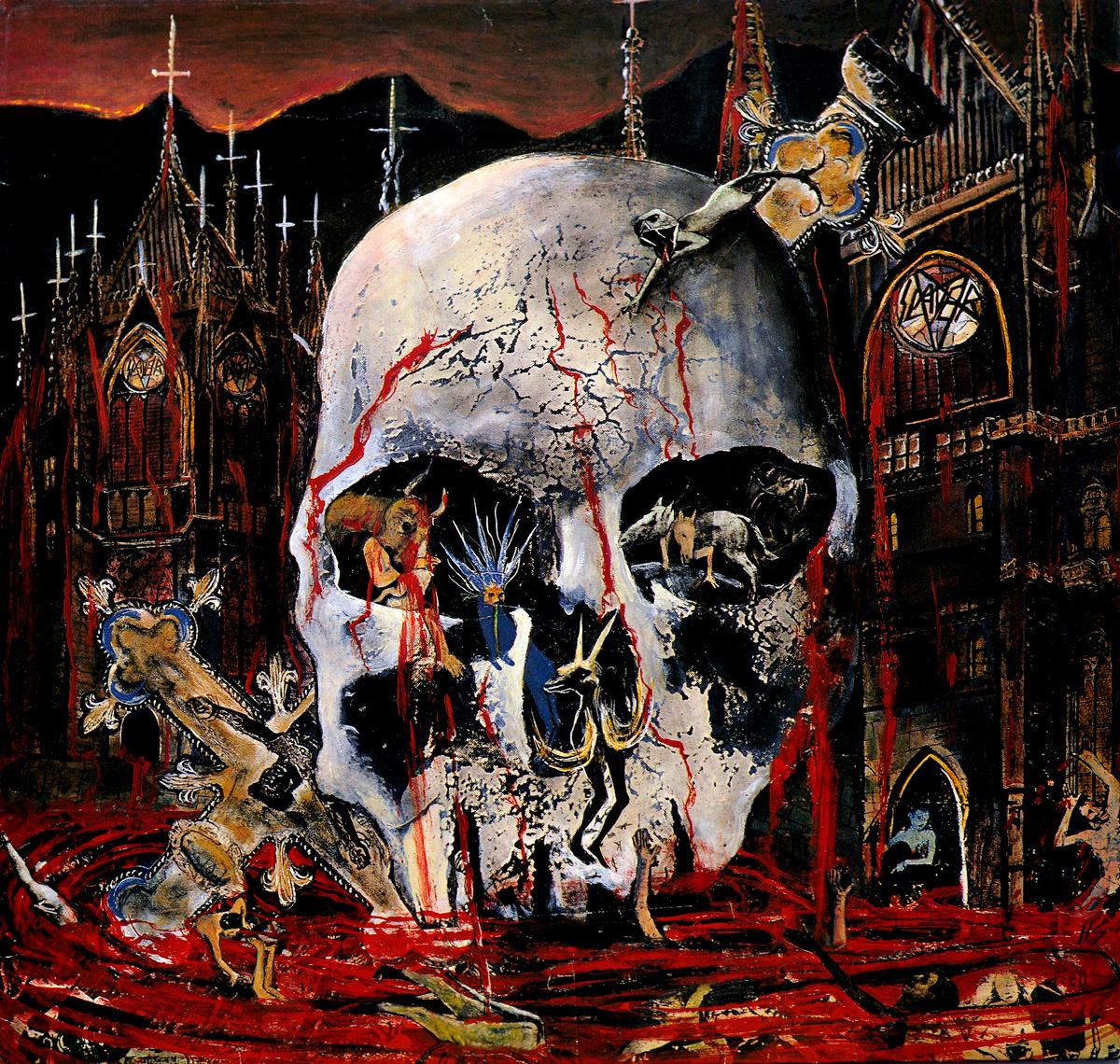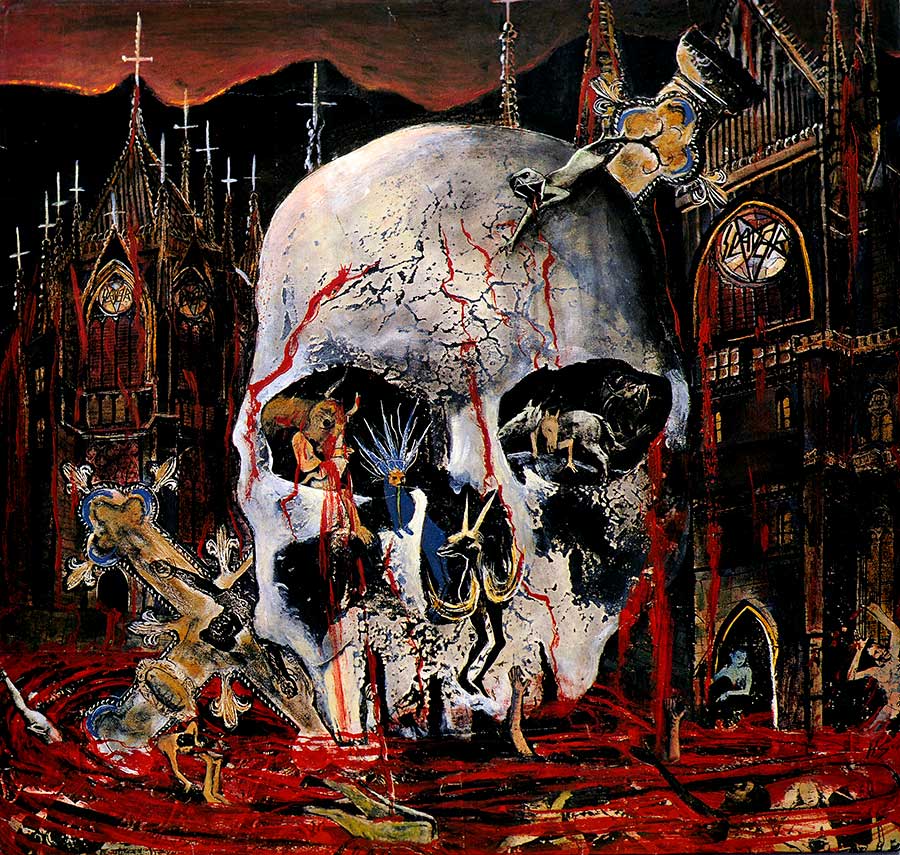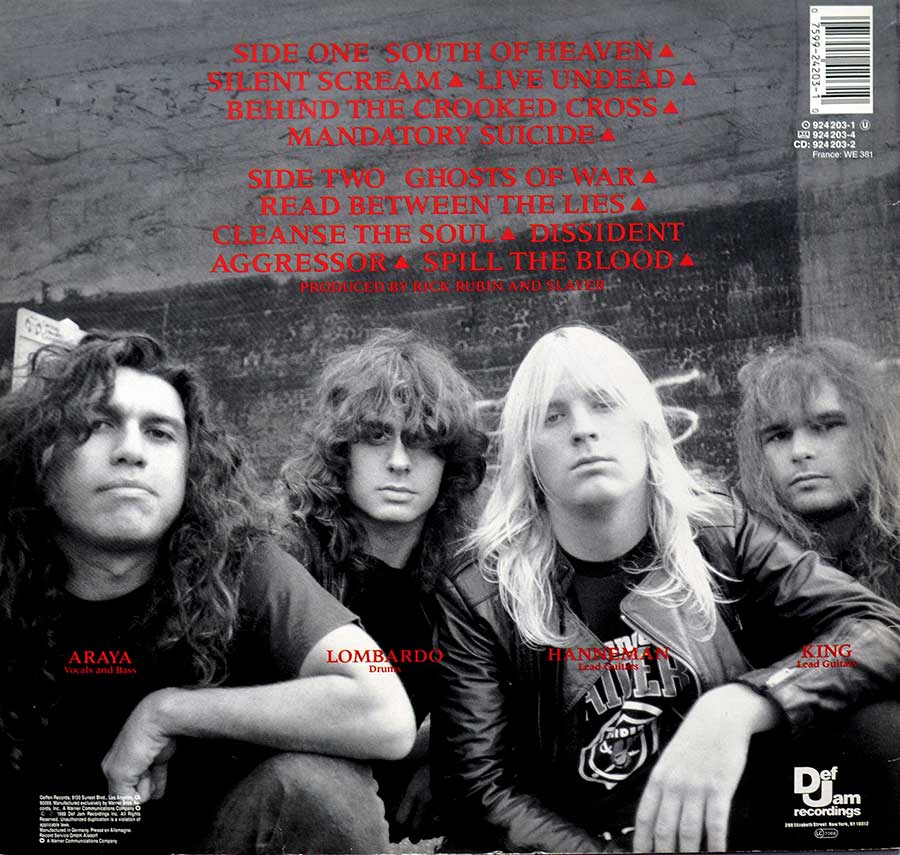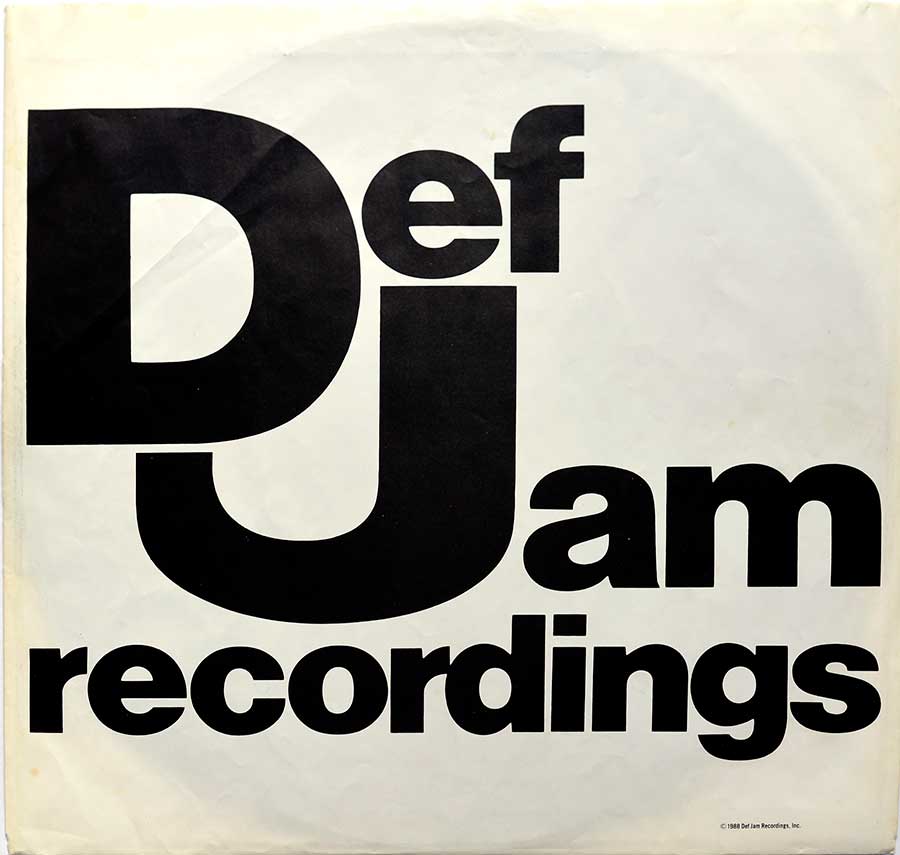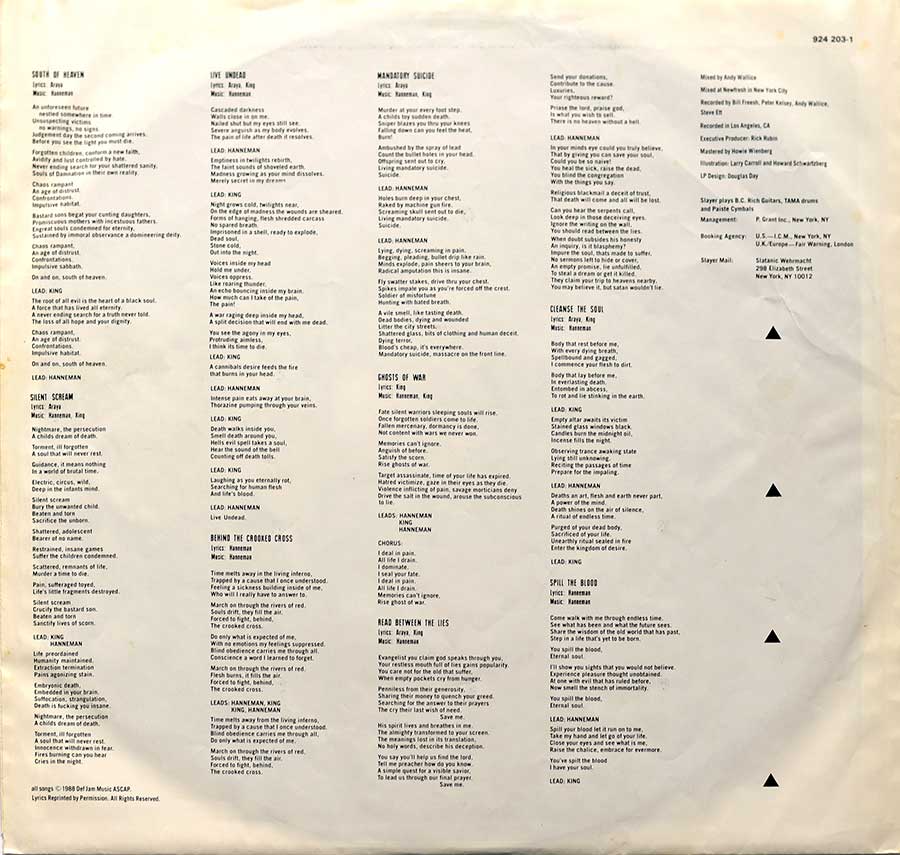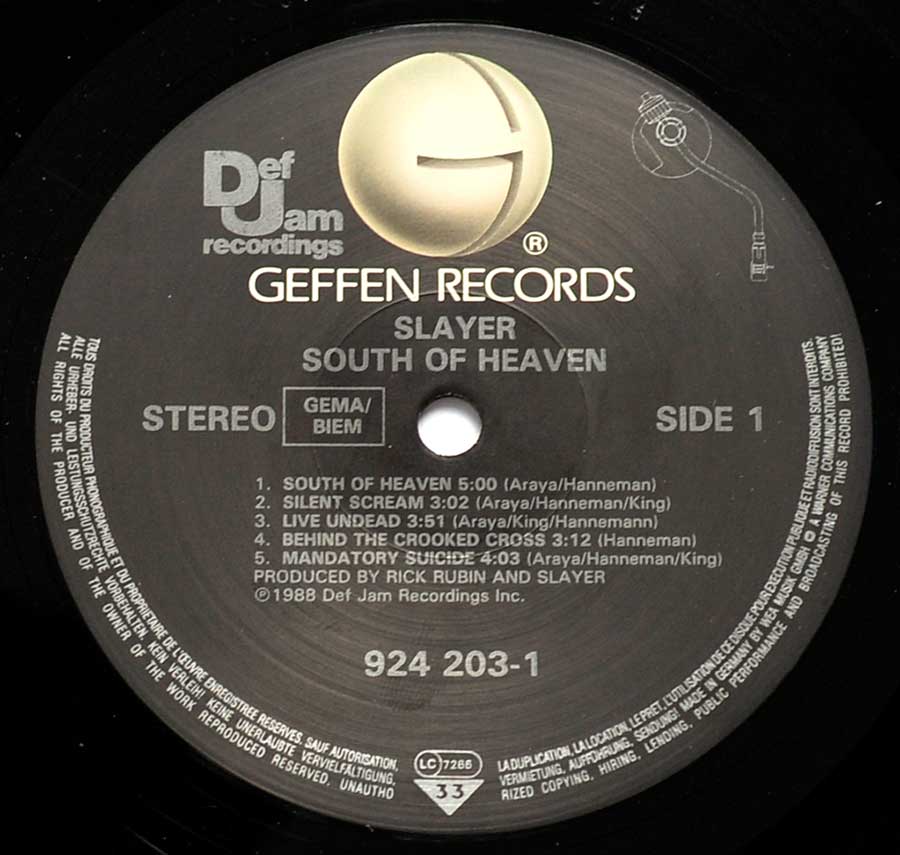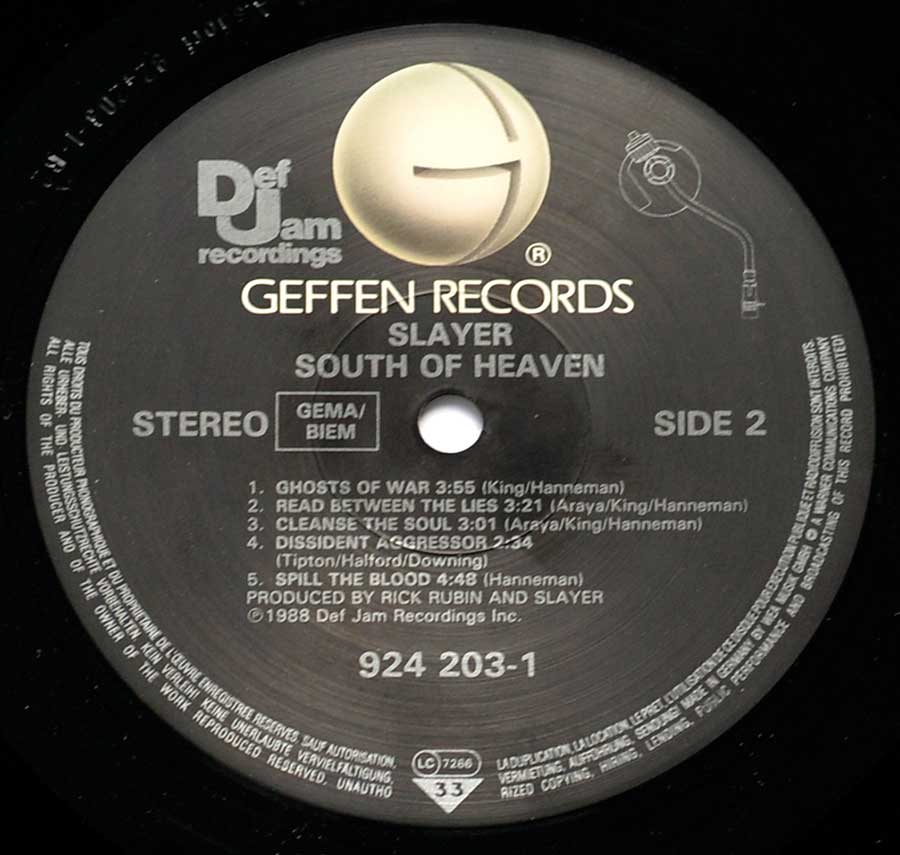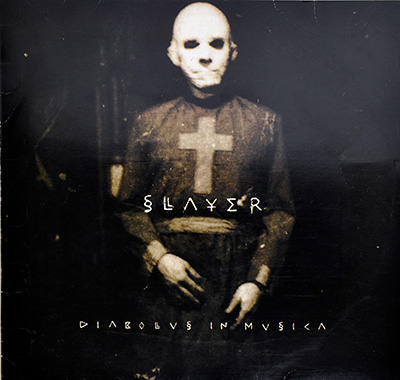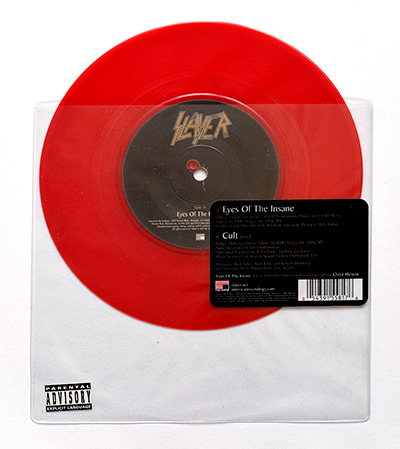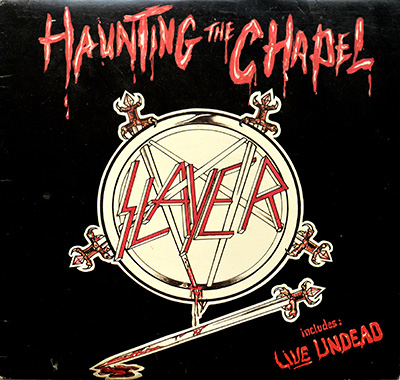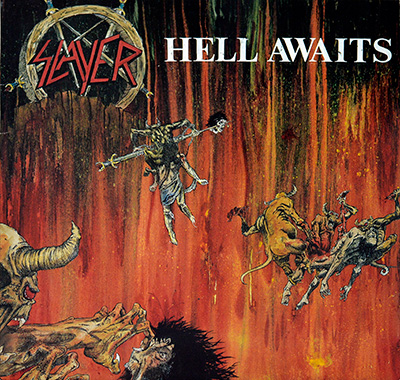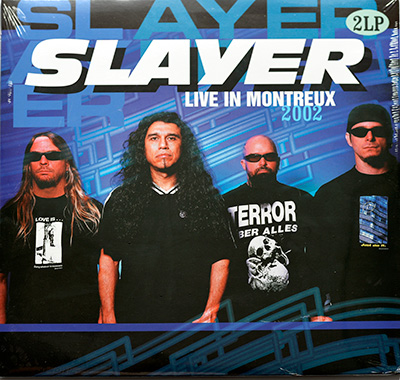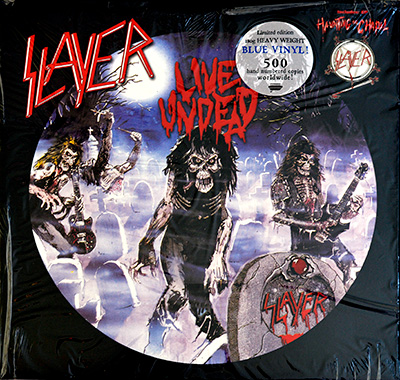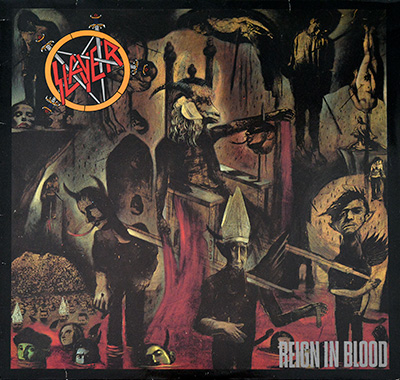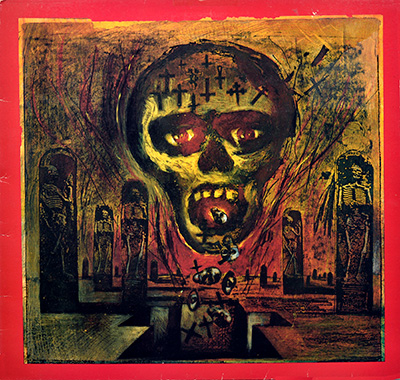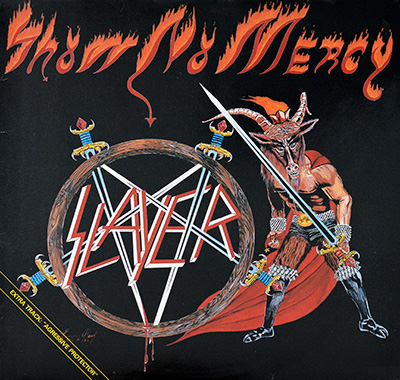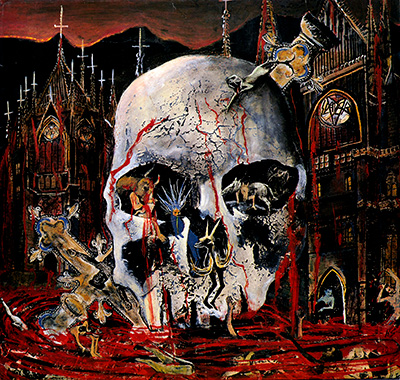Album Description:
"South of Heaven" is a monumental album that solidified Slayer's position as one of the pioneering bands in the thrash metal genre. Released on July 5, 1988, this fourth studio album marked the band's continued collaboration with record producer Rick Rubin, whose contribution to Slayer's previous album, "Reign in Blood", had already pushed the boundaries of their sound.
The album's 12" vinyl LP format includes the original Def Jam Recordings custom inner sleeve, which provides album details and complete lyrics for all the songs. This attention to detail showcases Slayer's commitment to delivering a comprehensive listening experience to their fans.
"South of Heaven" became Slayer's second album to enter the prestigious Billboard 200 chart and their last release under the Def Jam Recordings label. Afterward, the album was reissued under the American Recordings label following Rick Rubin's departure from his partnership with Russell Simmons. Distribution of the album was handled by Geffen Records through Warner Bros. Records, as Columbia Records initially refused to release any material by the band. Despite these challenges, the album managed to peak at number 57 on the charts and was later awarded a gold certification by the Recording Industry Association of America in 1992.
One notable aspect of "South of Heaven" is Slayer's deliberate decision to slow down the tempo compared to their previous works. This change in pace allowed the band to explore new musical territories while retaining their signature aggression and intensity. Undistorted guitars and toned-down vocals replaced the blistering speed and relentless aggression of their earlier albums. This stylistic shift received mixed reviews from critics and fans alike. While some praised the band for their musical evolution and willingness to experiment, others, accustomed to Slayer's faster and more aggressive style, expressed disappointment.
Despite the mixed reception, "South of Heaven" introduced two timeless tracks that have become permanent fixtures in Slayer's live performances. "Mandatory Suicide" and the album's title track continue to captivate audiences with their powerful riffs, haunting melodies, and intense lyrical themes. These songs showcase Slayer's ability to create dark, thought-provoking music that resonates with listeners on a visceral level.
The album's production team, led by Rick Rubin, played a crucial role in capturing Slayer's sound and vision. Sound engineers Andy Wallace, Bill Freesh, and the late Steven Ettinger (1952-2008) worked tirelessly to achieve the desired sonic impact, while Howie "Iron" Weinberg handled the mastering engineering process. The result is a meticulously crafted album that showcases the band's musical prowess and the distinctive atmosphere of their sound.
In terms of album design, Larry W. Carroll's illustration and photography add a visual dimension that complements the music's darkness and intensity. The cover art creates a sense of foreboding and sets the stage for the auditory journey that awaits the listener.
